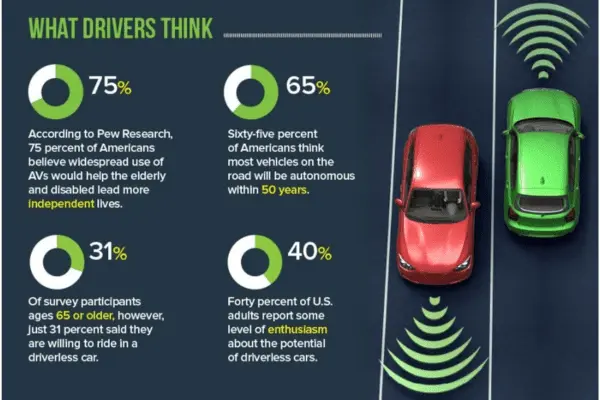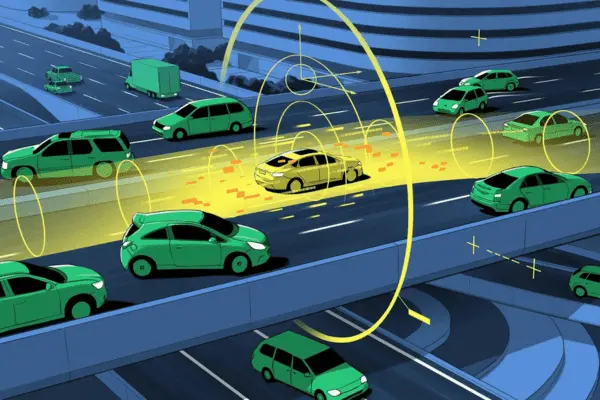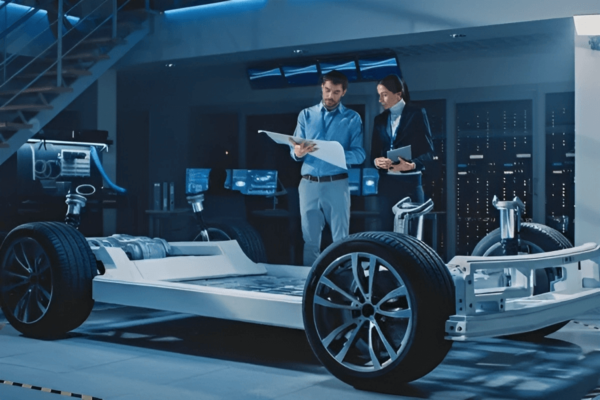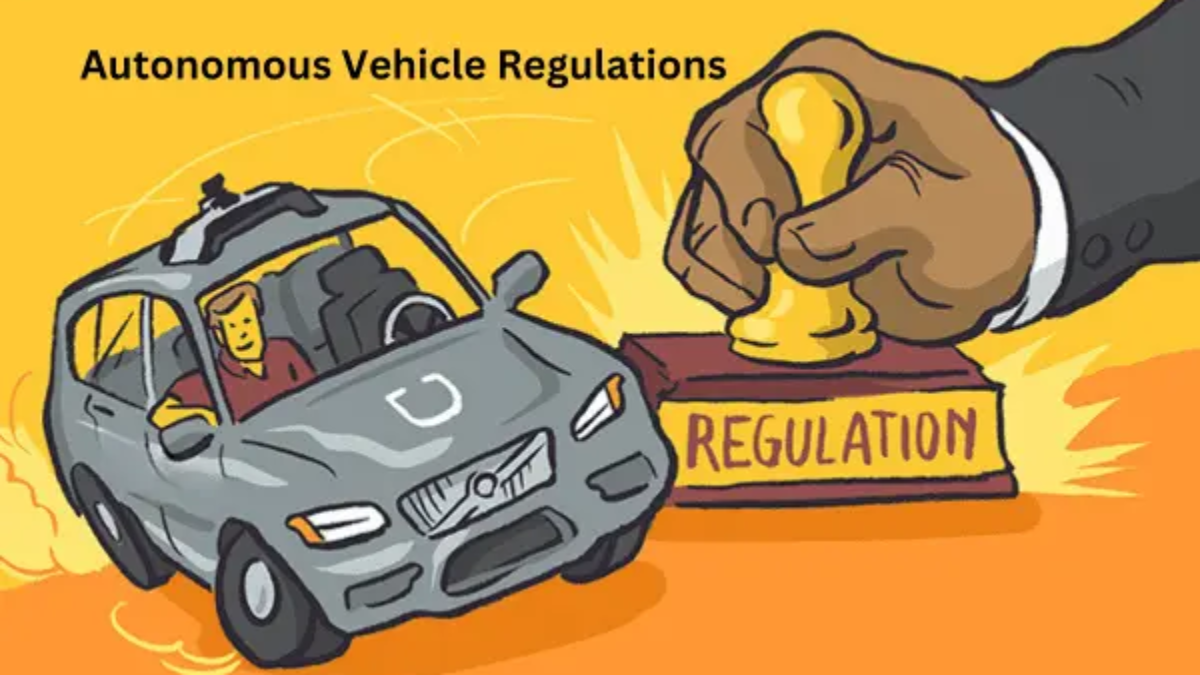Introduction
Autonomous Vehicle Regulations, often known as self-driving or driverless cars, are a game-changing technical innovation that promises to reshape the transportation sector. However, the path to widespread implementation is plagued with substantial obstacles, including liability concerns, safety requirements, and public acceptance. Governments around the world are establishing a range of legislation to address these challenges, with a focus on the development, testing, and deployment of self-driving vehicles. These rules are critical to ensuring that this innovative technology benefits society while minimizing associated hazards.
Key Aspects of Autonomous Vehicle Legislation

1. Safety
The cornerstone of Autonomous Vehicle Regulations is safety. Governments are enacting tough safety regulations to ensure that self-driving automobiles are as safe, if not safer, than human-driven vehicles. These standards address essential components of the vehicle’s ability to see its surroundings, make real-time judgments, and respond successfully to unexpected situations. By requiring stringent safety protocols, regulators hope to reduce accidents caused by software flaws, hardware problems, or environmental causes. This emphasis on safety not only protects passengers, but also instills trust in the general public, leading to increasing acceptance of autonomous technology.
2. Testing and deployment.
A standardized framework for Autonomous Vehicle Regulations is required for their safe incorporation onto public roads. Regulations frequently require manufacturers and developers to seek special licenses or permits before testing their cars. Some countries allow testing only under regulated settings, such as within specified testing zones or during specific hours. Transitioning from testing to commercial deployment necessitates even more demanding approval procedures to ensure that these vehicles meet all safety and performance standards. This tiered approach enables authorities to detect and address any hazards before autonomous vehicles become widely available.
3. Data Collection and Reporting
During operation, autonomous vehicles produce massive amounts of data, including information about performance, collisions, and near-misses. Regulations frequently require manufacturers to gather and report this data to relevant authorities. Such standards serve several goals, including assessing the effectiveness and safety of autonomous systems, identifying areas for improvement, and ensuring accountability. Furthermore, the insights gained from this data can help to shape future policy decisions and technology breakthroughs.
4. Insurance and Liability
Determining liability in the event of an accident involving an autonomous vehicle is a hard task. Regulations seek to clarify questions of liability, determining whether the manufacturer, vehicle owner, or a third party is responsible. This clarity is critical for establishing insurance plans that address the unique risks involved with self-driving vehicles. By addressing these concerns, rules help to ensure that accident victims receive enough compensation and support.
5. Privacy
The data generated by self-driving vehicles creates serious privacy concerns. Regulations frequently contain requirements governing the collection, storage, and sharing of this information. Clear principles for data security and privacy are critical for establishing public trust and protecting individuals’ personal information. Such precautions are especially critical in an era when data breaches and misuse are becoming more common.
6. Accessibility
Autonomous cars have the potential to transform mobility for people with disabilities. To exploit this potential, rules must make self-driving technology available to all consumers. This includes adhering to international standards such as the Americans with Disabilities Act (ADA) and creating features that address a wide range of demands. By putting accessibility first, policymakers can promote equity and inclusion in the use of autonomous technology.
7. Infrastructure
The successful deployment of self-driving vehicles is dependent on robust infrastructure, such as high-definition maps, communication networks, and traffic management systems. Regulations may address the development and maintenance of this infrastructure in order to promote safe and efficient autonomous driving. Infrastructure investments benefit not only self-driving cars, but also the overall transportation ecosystem.
Advantages of Autonomous Vehicle Regulations

Regulations governing autonomous cars provide various benefits that encourage responsible development and implementation of this technology. Key benefits include:
1. Enhanced Safety
Autonomous vehicle regulations prioritize safety, which considerably reduces the likelihood of accidents caused by system faults or programming errors. Rigorous regulations ensure that self-driving cars fulfil high safety standards, assuring both users and the broader public.
2. Consistency and uniformity
Regulations offer a regulated framework for the development and usage of self-driving vehicles, ensuring a level playing field for manufacturers. This uniformity is particularly crucial in foreign markets, as uniform standards can help with cross-border adoption and interoperability.
3. Accountability and Liability Clarity
Clear criteria for duty and culpability aid in resolving legal issues and ensuring that accident victims obtain justice. Regulations define the roles of manufacturers, owners, and other stakeholders, resulting in a transparent system for dealing with events involving autonomous vehicles.
4. Data Driven Insights
Mandatory data collection allows authorities to efficiently monitor autonomous cars’ performance and safety. This data contributes to evidence-based policymaking by assisting regulators in addressing new difficulties and gradually improving safety standards.
5. Public Acceptance and Trust
Transparent and well-enforced restrictions boost public trust in self-driving vehicles. Regulators may allay fears and encourage more widespread usage of self-driving technology by proving that these vehicles are subject to rigorous control.
6. Privacy Protection
Data security and privacy regulations protect individuals’ sensitive information, creating trust in autonomous systems. Regulators can protect the public interest by ensuring that data is utilized appropriately.
7. Innovation Within Boundaries
Regulations create a balance between encouraging innovation while upholding ethical and safety requirements. Companies can investigate new technologies while adhering to societal values since they provide a clear framework for development.
8. Equity & Accessibility
Regulations prioritize accessibility, ensuring that the benefits of self-driving vehicles are available to all members of society, including those with disabilities. This dedication to equity contributes to a more inclusive transportation system.
Drawbacks and Challenges of Autonomous Vehicle Regulation

Despite its benefits, rules controlling autonomous cars provide various problems and potential drawbacks:
1. Overregulation
Excessively rigorous or complex restrictions might stifle innovation and impede the development and deployment of self-driving vehicles. Finding the correct balance between safety and technological innovation is an ongoing problem.
2. Compliance Costs
Meeting legal criteria can be costly for manufacturers and operators, potentially raising the price of autonomous vehicles for consumers. These financial constraints could limit access to self-driving technology.
3. Lack of Global Standardization
Differences in rules between regions and countries can make it difficult for manufacturers to operate internationally. The lack of global standards may slow the general adoption of autonomous vehicles and impede interoperability.
4. Rapid technological advancements.
The rapid pace of technological progress may exceed the ability of legislation to keep up. Outdated regulations may fail to recognize modern capabilities and difficulties, posing obstacles to growth.
5. Testing and deployment bottlenecks
Complicated regulatory processes can cause testing and deployment delays, postponing the entry of self-driving vehicles to the market. Streamlining these processes is critical to promoting timely innovation.
6. Interoperability Issues
Variations in regional rules may cause interoperability issues, with cars designed for one jurisdiction failing to perform in another. Harmonizing standards is critical for avoiding such complications.
7. Increased Administrative Burden
Regulations mandating extensive data collection and reporting can impose enormous administrative difficulties on both producers and regulators. These requirements may result in increased costs and slower processes.
8. Unresolved Liability Concerns
While Autonomous Vehicle Regulations clarify some aspects of liability, they may not adequately address complicated scenarios involving self-driving vehicles. Additional legal frameworks may be required to successfully manage peculiar instances.
Conclusion
The Autonomous Vehicle Regulations is a critical component of the ongoing transformation of the transportation industry. While these regulations offer numerous benefits, including enhanced safety, accountability, and public trust, they also present challenges such as compliance costs, overregulation, and the need for global standardization.
As technology continues to evolve rapidly, legislators, manufacturers, and the public must collaborate to develop flexible and forward-thinking regulatory frameworks. These frameworks should prioritize safety and accessibility while fostering innovation and addressing concerns about liability, privacy, and ethical decision-making. Achieving this balance will be essential to unlocking the full potential of autonomous vehicles and ensuring their successful integration into society.
The future of autonomous transportation depends on the ability of stakeholders to work together in a dynamic and cooperative manner. By crafting thoughtful regulations, we can pave the way for a safer, more efficient, and inclusive transportation system that benefits all.


